
A SCIENTIFIC AND ARTISTIC PERSPECTIVE ON THE PALEOECOLOGY OF THE LUSITANIAN BASIN
Endymion is a project dedicated to the study and cataloguing of fossil remains with the ultimate goal of reconstructing the organisms, the habitats and the ecological interactions established in the Mesozoic context of Western Iberia.
THE
LUSITANIAN
BASIN
Tracing its origins back to the Late Triassic and the break-up of Pangaea, this sedimentary basin took its present shape over a non-volcanic, continental margin (Western Iberian Margin), following the rifting events that led to the opening of the North Atlantic Ocean.
About two thirds of the Lusitanian Basin are still visible on the western coast of Portugal; its stratigraphy reveals a complex succession of landscapes — coastal plains, fluvial environments, shallow seas — that provided habitats for a myriad of living organisms during much of the Mesozoic.
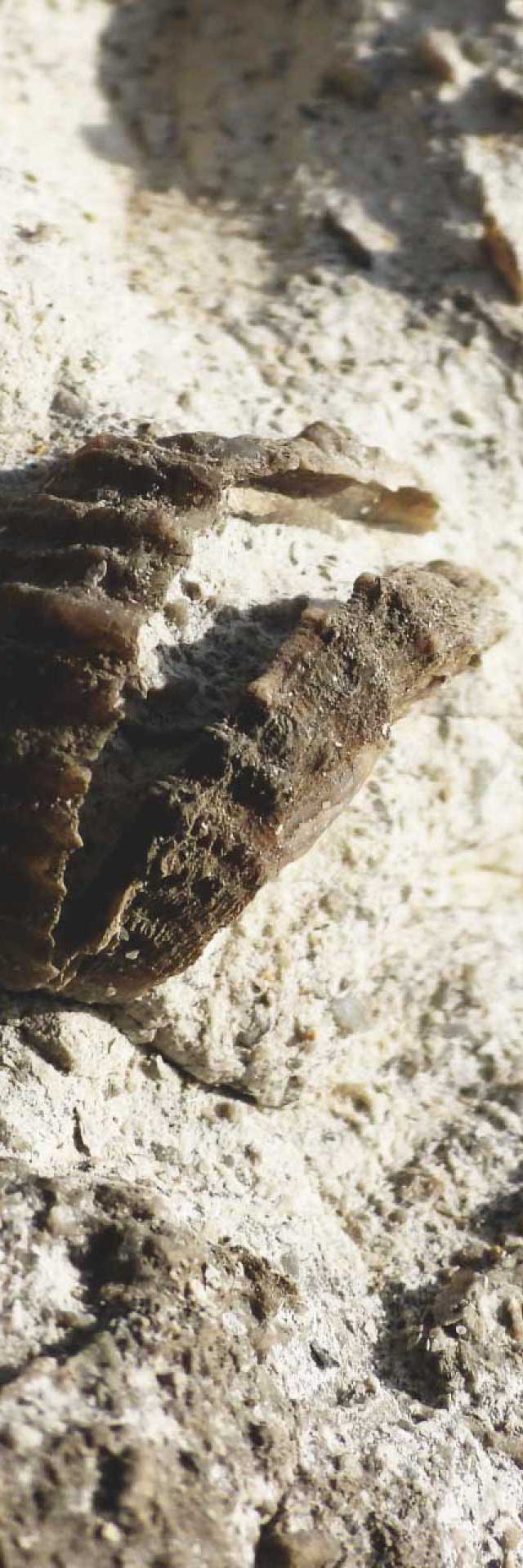
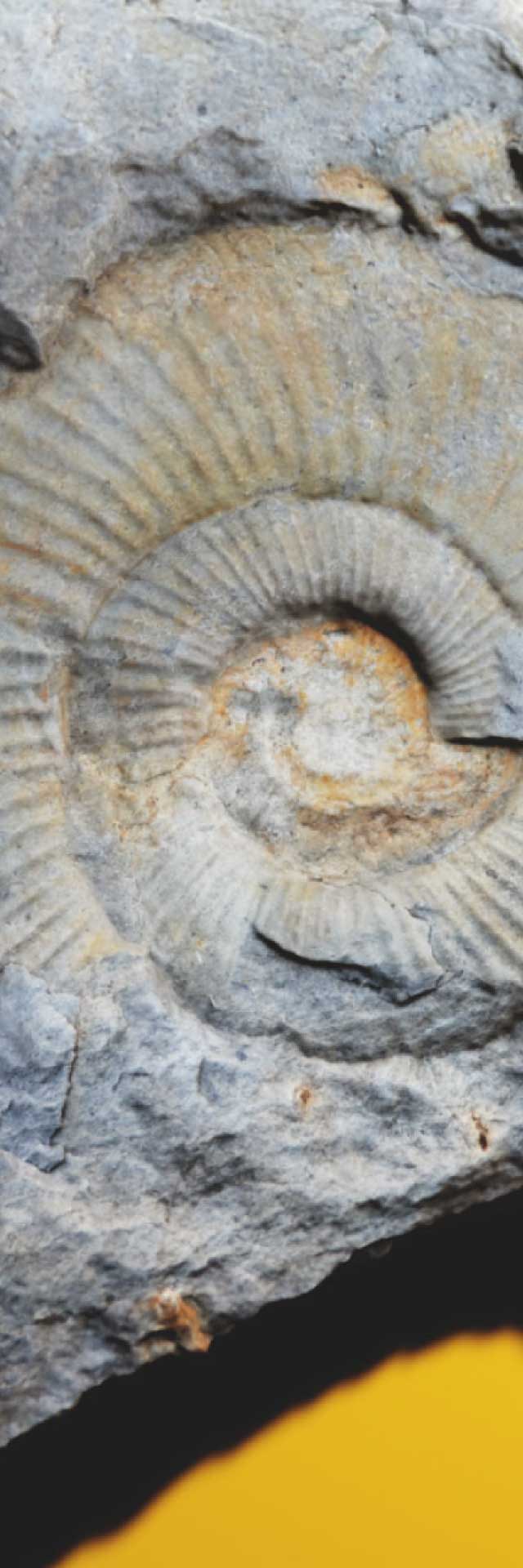
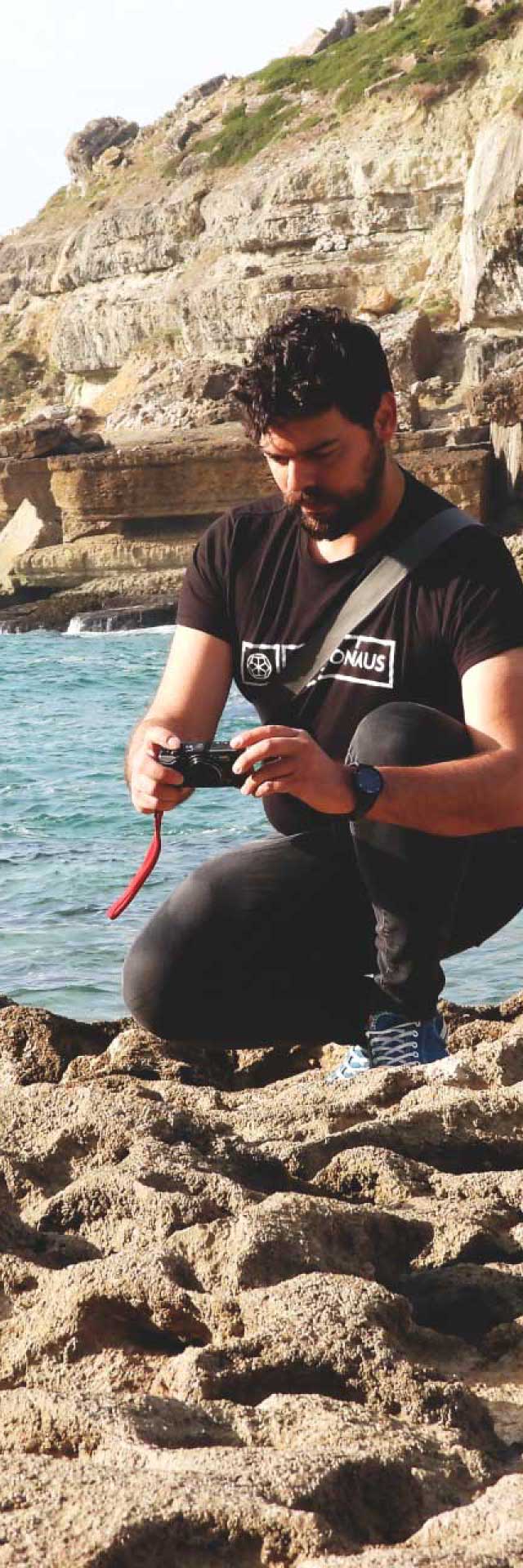
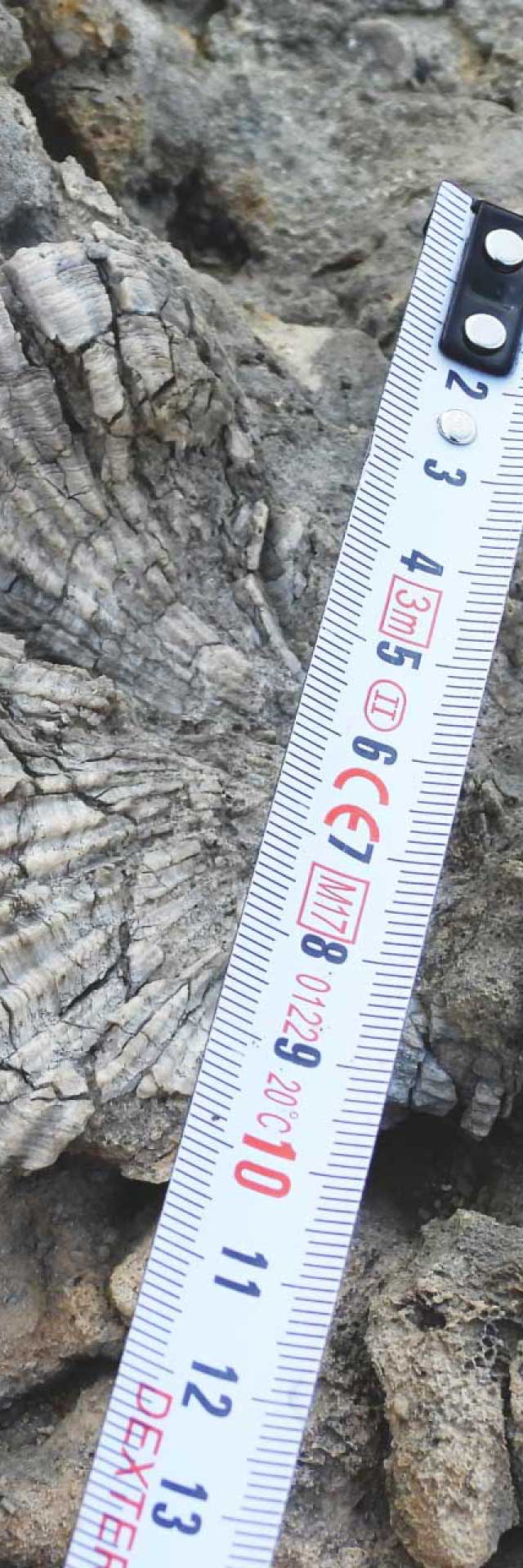
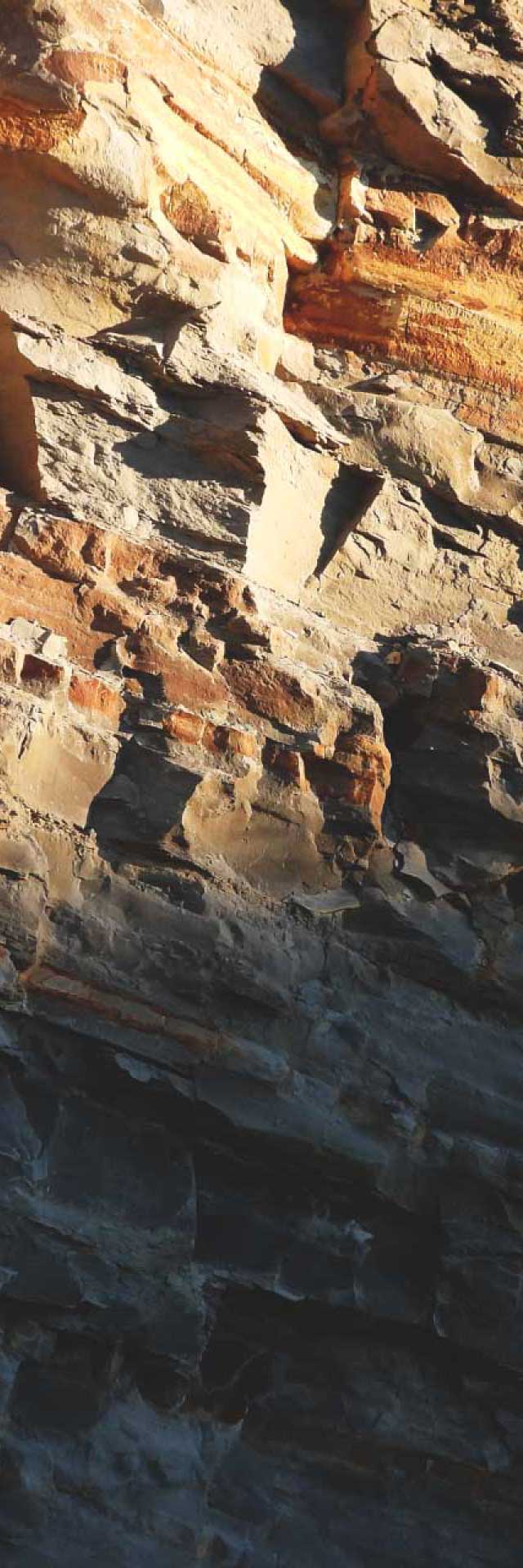
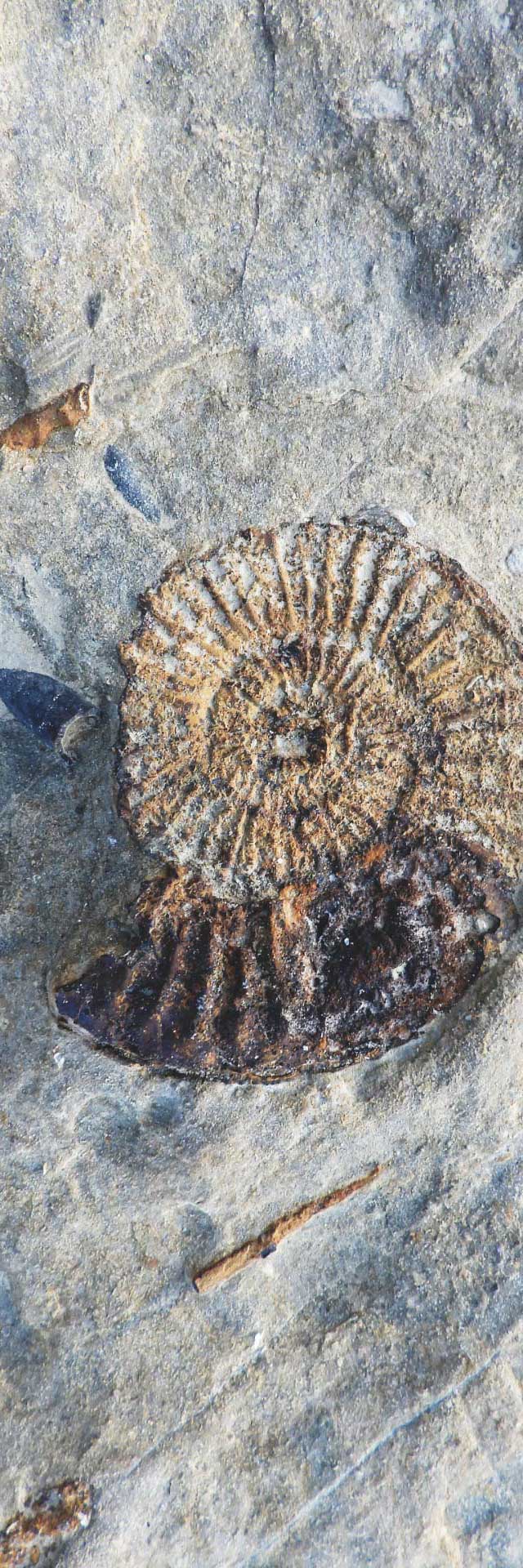
CAPTURING GLIMPSES FROM THE PAST
The first component of this project revolves around prospecting activities focused on the identification of fossil remains. During this stage — and by employing non-destructive methods — each specimen is described, georeferenced and visually scanned based on photogrammetry techniques.
The collected data is then compiled into an open catalogue, designed based on a fossil selection that is representative of different locations and chronologies. This object is supported by interactive three-dimensional models in order to preserve morphological and depositional information.
REASSEMBLING ANCIENT LIVING LANDSCAPES
Based on its cataloguing process — and on the available paleontological literature — Endymion seeks to depict the organisms and habitats of the Lusitanian Basin through paleoartistic restorations, evidence based and produced with a strong emphasis on accuracy.
This effort goes through different approaches, from graphical two-dimensional illustrations to volumetric sculptures. Its application can be equally channeled as interpretation tools for the scientific community as well as educational content, mediated with science communication for wider audiences in mind.
GEOGRAPHIC
CONTEXT
Endymion develops its activity based in a designated area imposed over the central sector of the Lusitanian Basin. This delimitation has its borders in the Nazaré Fault, to the North, and in the Tagus Estuary Fault, to the South.
In this context, cataloguing expeditions are deployed in sections of greater fossiliferous interest, favouring rocky outcrops of sedimentary origin with good operational accessibility and prone to natural exposure of fossilized specimens.
SELECTED
BIBLIOGRAPHY
I
Falkingham, P. L. (2012). Acquisition of high resolution three-dimensional models using free, open-source, photogrammetric software. Palaeontologia electronica, 15(1), 15.
II
Johnson, E. H., & Carter, A. M. (2019) Defossilization: A Review of 3D Printing in Experimental Paleontology. Front. Ecol. Evol. 7:430. doi: 10.3389/fevo.2019.00430
III
Kullberg, J. C., Rocha, R. B., Soares, A. F., Rey, J., Terrinha, P., Azerêdo, A. C., … & Miranda, R. M. (2013). A Bacia Lusitaniana: estratigrafia, paleogeografia e tectónica. In: Geologia de Portugal, Vol. II: Geologia Meso-cenozóica de Portugal. Eds. Rui Dias, Alexandre Araújo, Pedro Terrinha, José Carlos Kullberg. Lisboa : Livraria Escolar Editora, Cap. III.3., p. 195-347
IV
Kullberg, J. C., & Rocha, R. B. (2014). The Upper Jurassic of the Lusitanian Basin: importance of linking lithostratigraphy, chronostratigraphy and cartography. I—the end of the 2nd rifting episode. Comunicações Geológicas, 101, 459-462.
V
Pinheiro, L. M., Wilson, R. C. L., Pena dos Reis, R., Whitmarsh, R. B., & Ribeiro, A. (1996). The western Iberia margin: a geophysical and geological overview. In Proceedings of the Ocean Drilling Program, Scientific Results. Vol. 146. (pp. 3-26).
VI
Quesada, C., & J. T. Oliveira (eds). (2019). The Geology of Iberia: A Geodynamic Approach. Vol. 4 – Cenozoic Basins. Springer Nature Switzerland AG, Regional Geology Reviews.
VII
Rasmussen, E. S., Lomholt, S., Andersen, C., & Vejbæk, O. V. (1998). Aspects of the structural evolution of the Lusitanian Basin in Portugal and the shelf and slope area offshore Portugal. Tectonophysics, 300(1-4), 199-225.

A SCIENTIFIC AND ARTISTIC PERSPECTIVE ON THE PALEOECOLOGY OF THE LUSITANIAN BASIN
Endymion is a project dedicated to the study and cataloguing of fossil remains with the ultimate goal of reconstructing the organisms, the habitats and the ecological interactions established in the Mesozoic context of Western Iberia.
THE
LUSITANIAN
BASIN
Tracing its origins back to the Late Triassic and the break-up of Pangaea, this sedimentary basin took its present shape over a non-volcanic, continental margin (Western Iberian Margin), following the rifting events that led to the opening of the North Atlantic Ocean.
About two thirds of the Lusitanian Basin are still visible on the western coast of Portugal; its stratigraphy reveals a complex succession of landscapes — coastal plains, fluvial environments, shallow seas — that provided habitats for a myriad of living organisms during much of the Mesozoic.
CAPTURING GLIMPSES FROM THE PAST
The first component of this project revolves around prospecting activities focused on the identification of fossil remains. During this stage — and by employing non-destructive methods — each specimen is described, georeferenced and visually scanned based on photogrammetry techniques.
The collected data is then compiled into an open catalogue, designed based on a fossil selection that is representative of different locations and chronologies. This object is supported by interactive three-dimensional models in order to preserve morphological and depositional information.
REASSEMBLING ANCIENT LIVING LANDSCAPES
Based on its cataloguing process — and on the available paleontological literature — Endymion seeks to depict the organisms and habitats of the Lusitanian Basin through paleoartistic restorations, evidence based and produced with a strong emphasis on accuracy.
This effort goes through different approaches, from graphical two-dimensional illustrations to volumetric sculptures. Its application can be equally channelled as interpretation tools for the scientific community as well as educational content, mediated with science communication for wider audiences in mind.
GEOGRAPHIC CONTEXT
Endymion develops its activity based in a designated area imposed over the central sector of the Lusitanian Basin. This delimitation has its borders in the Nazaré Fault, to the North, and in the Tagus Estuary Fault, to the South.
In this context, cataloguing expeditions are deployed in sections of greater fossiliferous interest, favouring rocky outcrops of sedimentary origin with good operational accessibility and prone to natural exposure of fossilized specimens.
BIBLIOGRAFIA
SELECIONADA
I
Falkingham, P. L. (2012). Acquisition of high resolution three-dimensional models using free, open-source, photogrammetric software. Palaeontologia electronica, 15(1), 15.
II
Johnson, E. H., & Carter, A. M. (2019) Defossilization: A Review of 3D Printing in Experimental Paleontology. Front. Ecol. Evol. 7:430. doi: 10.3389/fevo.2019.00430
III
Kullberg, J. C., Rocha, R. B., Soares, A. F., Rey, J., Terrinha, P., Azerêdo, A. C., … & Miranda, R. M. (2013). A Bacia Lusitaniana: estratigrafia, paleogeografia e tectónica. In: Geologia de Portugal, Vol. II: Geologia Meso-cenozóica de Portugal. Eds. Rui Dias, Alexandre Araújo, Pedro Terrinha, José Carlos Kullberg. Lisboa : Livraria Escolar Editora, Cap. III.3., p. 195-347
IV
Kullberg, J. C., & Rocha, R. B. (2014). The Upper Jurassic of the Lusitanian Basin: importance of linking lithostratigraphy, chronostratigraphy and cartography. I—the end of the 2nd rifting episode. Comunicações Geológicas, 101, 459-462.
V
Pinheiro, L. M., Wilson, R. C. L., Pena dos Reis, R., Whitmarsh, R. B., & Ribeiro, A. (1996). The western Iberia margin: a geophysical and geological overview. In Proceedings of the Ocean Drilling Program, Scientific Results. Vol. 146. (pp. 3-26).
VI
Quesada, C., & J. T. Oliveira (eds). (2019). The Geology of Iberia: A Geodynamic Approach. Vol. 4 – Cenozoic Basins. Springer Nature Switzerland AG, Regional Geology Reviews.
VII
Rasmussen, E. S., Lomholt, S., Andersen, C., & Vejbæk, O. V. (1998). Aspects of the structural evolution of the Lusitanian Basin in Portugal and the shelf and slope area offshore Portugal. Tectonophysics, 300(1-4), 199-225.


